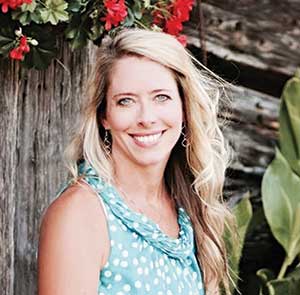Innovator: Bringing Blended Learning to Common Core
This month's innovator, Lisa Manross, discusses the value of blended and flipped learning in the context of Common Core.

Lisa Manross
Lisa Manross, district personalized learning coach at Henry County Schools, McDonough, GA, recently moved into her position with the county after 14 years as a classroom teacher. Three years ago, she created a Web-based individual math and science curriculum "map" based on the Georgia Common Core Standards, enabling her students to move at their own pace in a blended learning environment.
THE Journal: What is your role with the district?
Lisa Manross: This is a new position for the county. The district moved me here to teach teachers what I used to do in my classroom, which had a lot to do with digital content learning. Over the next five to six years, we are converting to a personalized learning district, with individual schools choosing their path — whether they want to become a blended learning school, a project-based school, service learning … whatever it may be. The district needed the resources to assist schools in that transition, and when it was discovered I was doing a blended learning program at the elementary level, that attracted interest. I'm one of nine people in this role.
My Top 3 Ways to Create Effective Personalized Learning Spaces
1) Ownership: Allowing students to take control over what they learn, how they learn it and when creates strong-minded students ready for the future. Give them choice and voice with flexibility in pace, path and place.
2) Release control: You have to let go and release classroom control. I don't mean create chaotic learning environments, but provide opportunities for students to learn to be independent and make their own decisions.
3) Technology: Technology is a tool with the ability to help construct self-directed learning spaces. Using technology as a tool creates a greater need for teachers and provides more time for student-teacher interaction.
THE Journal: How did your blended learning program come about?
Manross: It started when the district was bringing WiFi to the schools. I am a tech lover at heart — that is my passion — and up until that point I was limited in what I could do. But with that I started creating a blended learning curriculum for my fifth-grade elementary students. I created my own Web site, myflippedclass.com, took videos from LearnZillion and YouTube and placed them on there according to the standard, and the kids would use those as a starting point to facilitate their learning. There was a menu in which the students had to figure out how they were going to learn something through online content, and then they had to do several activities that showed me they were mastering those things.
It evolved over the next three years, gaining attention because you don't see that in elementary classrooms a whole lot. Others would come in, visit, and want to know how to re-create it. We have a middle school teacher who rewrote my menu for the sixth-grade curriculum, and a few elementary school teachers are now making it their own. It's pretty neat to see.
THE Journal: What were you going for when you started?
Manross: It was really just my love of technology and wanting the students to be more engaged. I never thought anybody else would care about it. It started in my living room one summer with just taking the standards from the state, separating those out and figuring out what digital content went with what standard. It took me an entire summer to put it together. I was working eight hours a day on it, trying to hash it all out.
THE Journal: What's most important about what you were able to achieve?
Manross: I think it's really the heart of differentiated instruction using blended learning, with students moving at their own pace and in their own time. So if a child needs more work on a certain standard, he or she has that opportunity, plus access to the teacher. They are also able to work on it at home — they're not limited to the four walls of our room. But the most impressive thing I saw was that the dynamics of the classroom changed.
THE Journal: How so?
Manross: The community improved. Kids who would normally be troublemakers would step up and help other students. It was a byproduct I hadn't even thought about. Yes, we got really good test scores, but at the end of the day the enjoyment for me came from seeing the students take ownership through that type of learning.
THE Journal: What did you learn from the experience?
Manross: I realized two main components needed to be part of the blended learning classroom. The first is that you have to have a monitoring piece in place – how to figure out where the students are, given that you have 30 students in 30 different places. And then you have to help the students set and reach goals. You obviously don't want a student sitting on unit 1 for four months.
THE Journal: Why did you decide to leave the classroom for the position with the district?
Manross: In my classroom I was affecting 30 kids, but now I get to work with teachers, and that means I can reach more kids. If I'm working with four teachers, we're affecting 120 students as opposed to just my 30. That's exciting for me.
About the Author
Dan Gordon is a freelance writer based in Agoura Hills, CA.